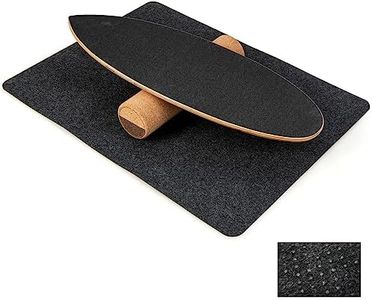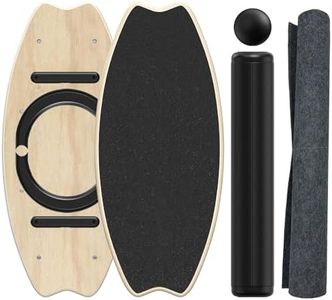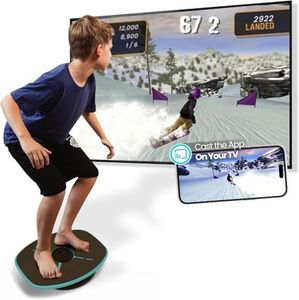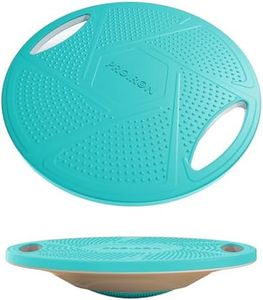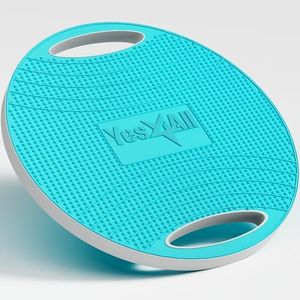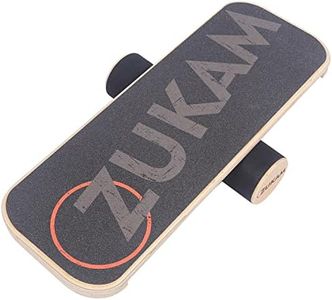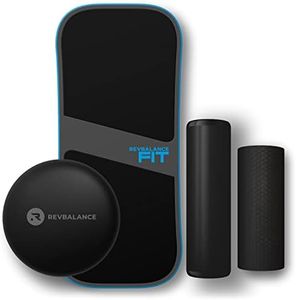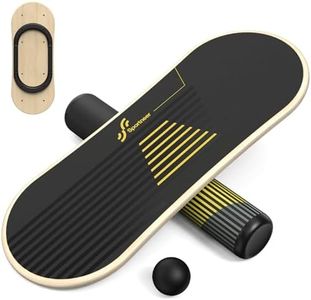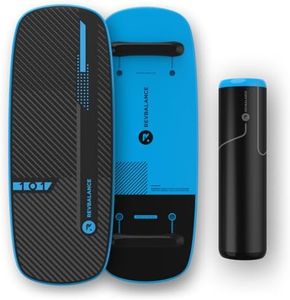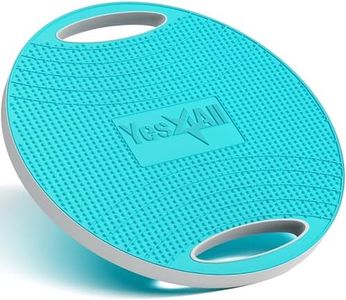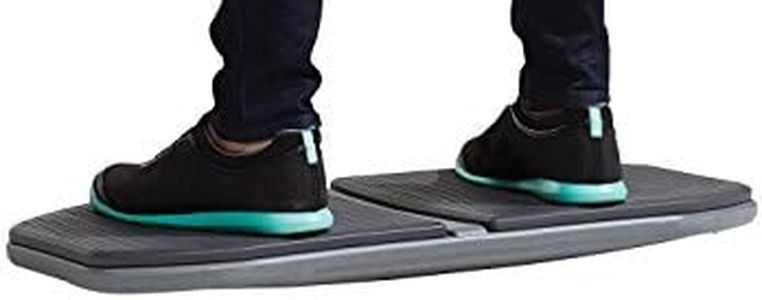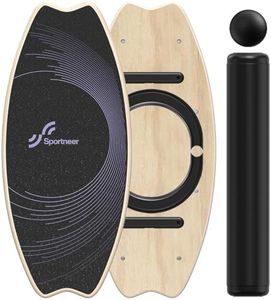We Use CookiesWe use cookies to enhance the security, performance,
functionality and for analytical and promotional activities. By continuing to browse this site you
are agreeing to our privacy policy
10 Best Balance Boards
From leading brands and best sellers available on the web.Buying Guide for the Best Balance Boards
Choosing a balance board is a great way to improve your coordination, stability, and core strength. However, with so many different types and features on the market, knowing what to look for can help you make the right choice that fits your exercise goals, skill level, and how you plan to use it. Understanding the main factors will allow you to make an informed decision that keeps your workouts safe and effective.Type of Balance BoardThe type of balance board refers to the design and functionality of the board, such as wobble boards, rocker boards, roller boards, and spring-based boards. This is important because each type challenges your balance in different ways and offers different benefits. Wobble boards pivot 360 degrees and are great for general balance and rehab, whereas rocker boards tilt only side to side or front to back, making them easier for beginners. Roller boards add a moving base for more advanced balance training. Deciding which type suits you depends on your experience and what you want to achieve—if you’re a beginner, a rocker board might offer a gentler start, while athletes looking for a challenge may prefer a roller or spring-based version.
Board Size and ShapeThe size and shape of a balance board determine how much room you have for your feet and how stable you will feel during use. Longer and wider boards offer more surface area, making them typically steadier and better for beginners or those using the board for rehabilitation. Smaller, narrower, or rounded boards can increase challenge and are often chosen by advanced users looking to refine their skills. If you have larger feet, check the usable surface to ensure comfort. Always match the board size to your skill level, desired exercises, and personal comfort.
Material and Build QualityThe material a balance board is made from affects its durability, weight, and feel underfoot. Common materials include wood, plastic, and composite materials. Wood boards are often sturdier and can support more weight, while plastic boards are generally lighter and may be easier to transport. Quality surfaces provide better grip, important for safety. If you plan to use the board regularly or for vigorous training, opt for a sturdier build. For occasional use or portability, lighter materials can be suitable.
Weight CapacityWeight capacity is the maximum amount of weight a balance board can safely support. This is crucial for your safety, as exceeding the recommended limit can risk injury or damage to the board. Weight capacities usually range broadly, so be sure to select a board that supports your body weight plus any extra gear, like shoes, to prevent accidents.
Surface GripSurface grip refers to how well your feet stay planted on the board to prevent slips during use. Good grip is important for safety and confidence, especially during fast movements or exercises requiring a lot of shifting. Boards may have textured surfaces, rubber coatings, or grip tape. If you plan to use it barefoot, look for smooth yet non-slip finishes. For shoe use, tougher grip surfaces are more appropriate. Consider your preferred workouts and footwear choice when assessing this feature.
Adjustability and Challenge LevelAdjustability relates to whether you can change the difficulty level or movement range of the balance board (such as switching out bases or adding attachments). Some boards let you start easier and progress as your balance improves. If you want a product that grows with your skill, look for adjustable options. If you’re buying for rehab or to share among users of varying levels, adjustability can be a big advantage.
Portability and StoragePortability describes how easy it is to move or store the balance board. Lighter, thinner boards are easier to transport or keep tucked away when not in use. If you have limited space or want something to take to the gym or office, this could be important. Consider the weight and size of the board in relation to where and how you’ll use it most often.

